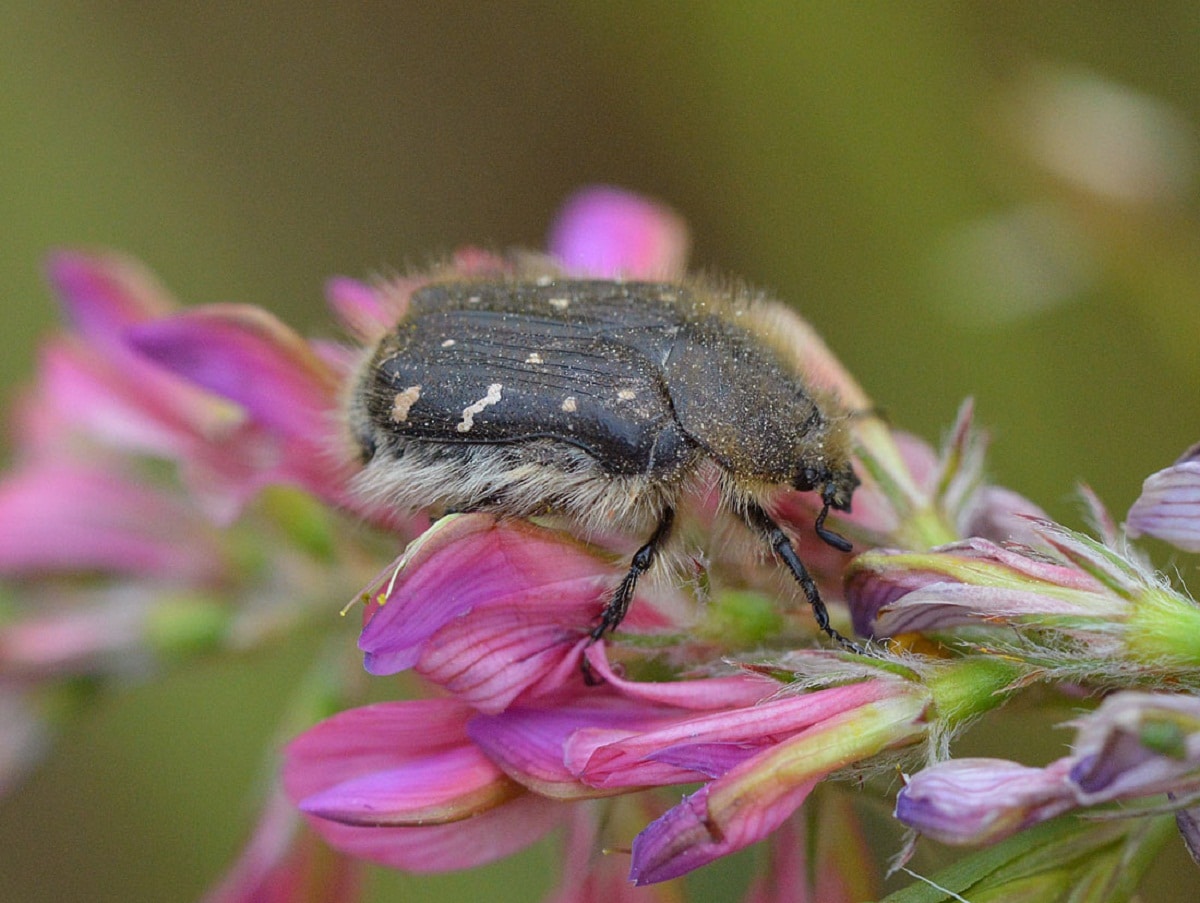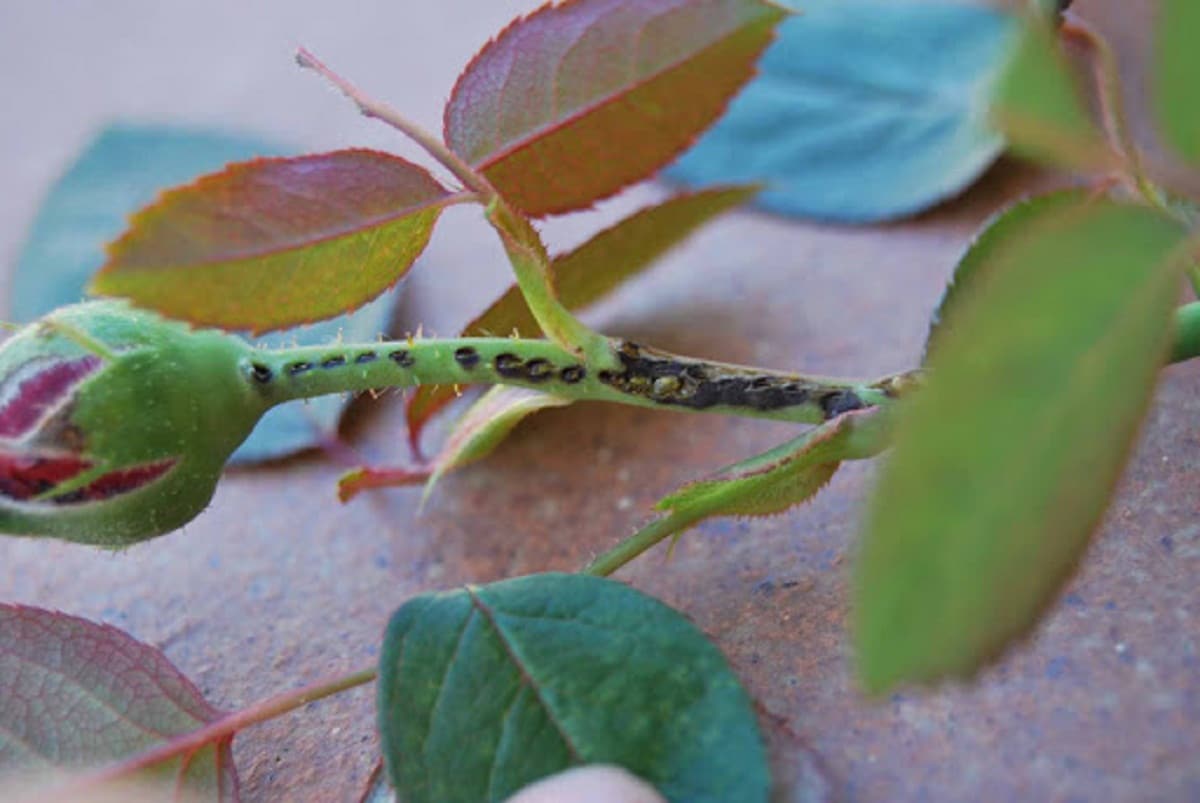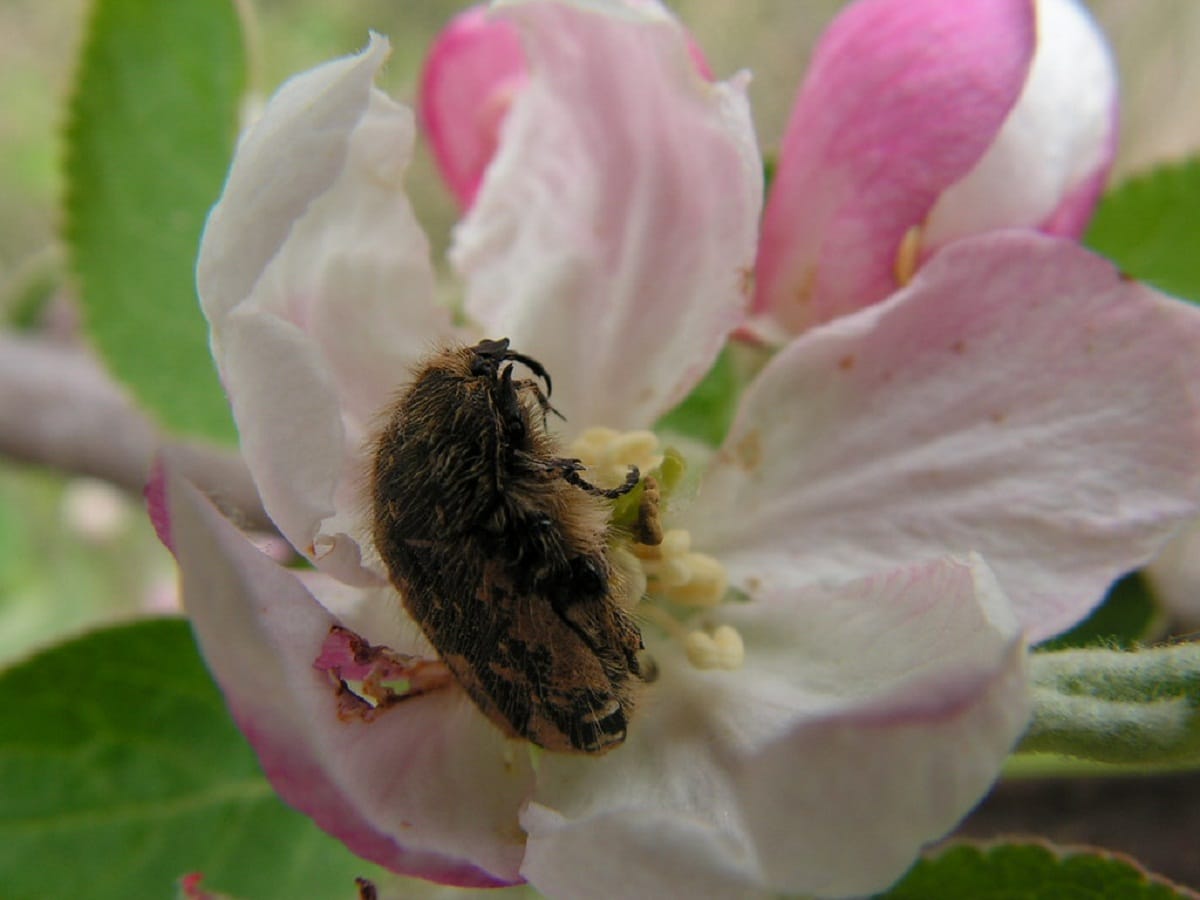
La Oxythyrea baleful It is a pest that can affect your garden, this being a beetle that usually attacks rose bushes specifically, deteriorating them. Also known as shroud beetles, they usually appear on our ornamental flowers when spring begins and this has to do with the fact that they feed mainly on pollen that is housed there.
Their rapid reproduction can make them become a threat to good health, especially rose bushes and that is why certain specific care must be taken to scare them away from our open spaces. In this article we will talk about Oxythyrea baleful and we will review their characteristics and how to take care of these coleopterans.
Features Oxythyrea baleful

When we talk about Oxythyrea baleful or shroud beetle, as it is commonly known, we are talking about a species of insects that are very small and that usually begin a systematic attack on our flowers, especially the rose bushes, when spring begins to arrive in our hemisphere.
These will deteriorate the cultivated flowers by gnawing on them. There is no single type of rose bush from which these small animals use to feed, but they are polyphagous, being able to ingest a large amount of food, among which is the pollen found in all types of floral organs.
It must be recognized that they are quite a difficult pest to handle if your crops are rose bushes. In the case of their larvae, they feed on the roots of the same flowers that they will later prey on in the future.
This resource of feeding particularly on the rose bushes causes them to suffer damages that alter their aesthetics. Even so, this will mean a problem for the ornamentation of our flowersTherefore, it is always convenient to keep this pest under control so that it does not significantly damage our crops.
The shroud beetle is a very small animal, which can measure up to a centimeter in length on its body and usually has a robust body appearance with a very small head, from which short antennae can be seen.
His whole body shows an intense black color, but you can also see different colors Among which is a rather coppery tone, in addition to a few rows of white spots that they have on the thoracic part, as well as some spots in the form of a point and whitish color on their abdomen.
One of its great characteristics is that of being a pollinator and that is why the shroud beetle it is covered with short hairs, which serve to carry out this pollination task.
If you have ever been close to one of these specimens, you will have noticed that while it flies it produces a particular buzzing noise, that it can be confused mainly with that made by other pollinators such as bees.

Those hairs will have wear when the specimens of the species enter the adult stage due to their use, something that will make them lose their pollinating power over time.
It is very probable that the specimens of this species are confused with those of Epicometis hirta, also very common in gardens and presenting very similar characteristics, in their physiognomy and length, as well as in the composition of its colors.
The way to differentiate them, to know what plague we face, is to count how many spines are seen on the tibiae of its first row of legs, since while the shroud beetle has two, the other species shows three.
Their larvae
The larvae of the Oxythyrea baleful demonstrate a whitish color, a robust build and a slimy coating and they tend to stay mainly in manure, in the compost or in any area where some type of organic matter is lodged.
But just like can represent a benefit for areas where there is any type of organic matterThese can represent a threat to the substrate of the bacchanalia or in the soils where our crops are found.
All because they show a great voracity and a particular predilection for roots, attacking crops from below, something that makes it best to carry out the task of eliminating them from these places to avoid this attack.
Habitat
The shroud beetle has a specific presence throughout the European and Asian territory, being distributed among Central and Southern Europe, the Middle East and Asia Minor, where they can become a plague for our crops.
It is a species that is very frequently found throughout the Iberian Peninsula and is usually found mainly in bushes, areas of low vegetation, all kinds of fruit gardens, cultivation areas and different forest clearings, beginning its most significant presence during spring times.
Its habitat is generally those edges of forests and grasslands where the temperature is pleasant and generally warm. The female will be the one that deposits the larvae underground and their development will take place there, while they begin to gnaw on the roots of the plants that are there.
Transmission

Although there are many methods that come close to a control mechanism of these, we must say that in some cases, the results of these forms are usually not positive, but in other situations, there are ways to keep this pest under control in the event that they are affecting your rose crops.
One of the traps that is used in order to attract these beetles for removal is use female pheromones. What you will do with this is attract males, thus being able to gather a large number of them, something that otherwise could not be done.
These traps, where we will apply the pheromones, must have regular cleaning maintenance, since according to specialists, the fact that there are many dead females in these will be counterproductive, attracting a greater number of male beetles due to the attractive aroma.
With these traps, what we will do is then be able to manually retain them, since they do not have a great speed. It would be convenient if you take a small container and you add water, so that while you are taking them you insert the inserts there and they drown. Adding just a little liquid soap to that water will help you a lot, which will make the surface tension of the water give way.
El Oxythyrea baleful It is a beetle that can be controlled and does not cause great damage, but it is always better not to have them in our rose bushes for better health of these.